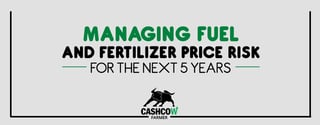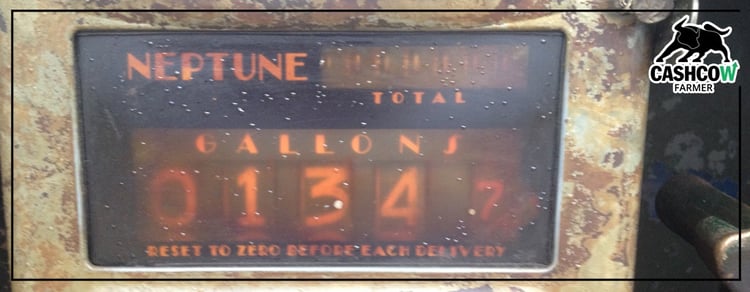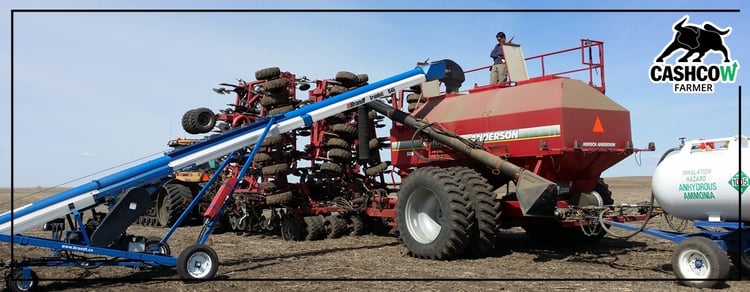
Farmers have various prices that greatly fluctuate on their farming operation. Most of them can be hedged using various strategies and programs.
You may not realize it, but fuel and fertilizers are part of that group: they can be hedged to take away the risk of their constantly fluctuating prices.
Here’s how.
1) Fertilizer Price Risk
You can buy and store fertilizer—that’s a common strategy farmers use. But that’s not going to protect you down the road.
Instead, think about it: what’s the main ingredient that goes into fertilizer?

It’s natural gas. I didn’t know that until recently, but it is. They compress air until it breaks down, turns into NH3(small), which is actually a fertilizer, and use it in lots of things.
Therefore, when the price of natural gas goes up, so does the cost of fertilizer.
Well, guess what? Natural gas is traded on the futures exchange, and you can hedge it by buying natural gas futures contracts for various times in the year, or by letting the contract expire then rolling into the next contract. Those are actually very good strategies for farmers to employ.
Natural gas hit a multi-year low a few years ago, but if you were to lock it in even now, you would be profitable in your margin account, which would wipe out the cost of fertilizer price increase.
2) Fuel Price Risk

Hedging fuel is similar to the natural gas strategy.
The main ingredient in fuel, of course, is oil. Oil hit a multi-year low of $26 or $28 a couple of weeks ago, though it’s creeped up to around $40 now. You can buy fuel contracts on the board just as you can natural gas.
Most farmers have storage for about one year’s worth of fuel on their farm. But when you’re storing actual fuel, you run the risk of leakage and fire. It’s sometimes better to go the paper route, especially if you want to lock in the fertilizer price for the next five years. That’s actually one of the first decisions we help our customers make when they consult us.
As you make money on those contracts, your fuel costs will increase, and the profits from the paper contracts you own on oil will offset the rising cost of fuel. So you’ve actually locked in those prices.
Biggest Mistake People Make in These Areas
The biggest mistake farmers make with hedging their price risk is that they don’t do it—or at least not for as long as they should.
“The biggest mistake farmers make with hedging their price risk is not doing it.”
A lot of guys lock in prices for only one year, instead of multiple. The reason? A lack of knowledge and comfort with executing positions in the futures market, because those can go against you too if you don’t handle them right.
The futures market can wipe out farms, but that’s when farmers are speculating and not hedging. We’re not betting on the price movements here: we’re just locking it in. There’s a big difference.
Conclusion
We work with our clients on managing the risk of fuel and fertilizer by using both the cash and futures markets. This is a key ingredient to becoming the lowest cost producer and most profitable farmer in your area.
Everyone’s going to save money this year, because fuel and fertilizer prices are low. But the smart, savvy farmers are the ones that are hedging risk by working with awesome partners.
There aren’t many people who really understand this stuff. This is something that’s good to have a partner in, not something you want to be holding the trigger on all while handling a farming operation.
Let us take a look at your situation and use our knowledge of the cash and futures markets to your advantage.





